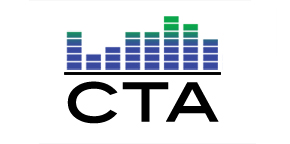As I’ve had the opportunity to mix a lot more often lately, I’ve spent more time working on my vocal effects.
The techniques I’m using currently are really a mashup of things I gleaned from Dave Pensado and his guests, my own experience and tastes and conversations with other front of house guys.
Please note that this post is descriptive, not prescriptive. There’s no magic here, just a few things that I’ve been pretty happy with of late.
Back In The Hall
We’ll start with background vocals first. Currently, I split my effects between the lead vocal and the backgrounds; something I do partly because I can, but mostly because I like the way it sounds.
My go-to effect for background vocals is the Hall. The SD8 has a decent built-in Hall that sounds pretty natural. I bus all my background vocals to an aux, and run that aux through the hall.
My strategy is thus: We typically only have two, maybe three background vocals. And having a pretty big vocal sound is part of our musical DNA right now. With a total of three vocals, it’s hard to make them big.
However, with a healthy dose of Hall on the backgrounds, they sound bigger than they are. I’m not going to get into all my settings (except one, in a minute) because they’re relatively unimportant and change week to week. Play with your effects and see what you come up with. What works in my room may not work in yours.
Main Entree
When it comes to the lead vocal, I go with a combination plate; a plate and a delay to be exact (catch that clever food alliteration?) I use the plate on the vocal for to main reasons, well actually one main and once ancillary reason.
First, the plate is a little tighter and that helps with clarity, but more important I just like the way it sounds. I always have. Give me a plate that sounds like an SPX990 or Lexicon and I’m a happy guy.
The second half of my vocal effects combo platter is the delay. I’ve played around a lot with delay in the last year, and have recently settled on something that I’m pretty happy with. It’s a straight delay (no feedback or regeneration) and the tempo is dictated by the song.
I used to do a lot of tap tempo delays, the ones that create a noticeable echo. I still use that occasionally, but I’m a little tired of them.
I started using really short delays after hearing Pensado talk about them. He would often use a really short, say 98-110 msec. delay to beef up a vocal. I tried that and generally liked the results. Then I started thinking, what if I set my delays to numbers that actually correspond to the tempo of the song? Say a 16th or 32nd note? So I downloaded Tap Tempo Calculator onto my iPad and started trying it out.
Keeping Time
My current strategy is to punch the tempo of the song into the calculator and set my delay time to the sixteenth note time (though sometimes I do some math and go with a thirty-second note) On most of our songs, that ranges between 100-200 msec.; I don’t go less than about 70, or more than 200. When the delay mixes in with the main signal (and when combined with a plate), the vocal sounds much bigger, yet still very clear.
It’s always surprising how much different the vocal sounds when I mute the effects between songs while Mark is talking during rehearsal. Suddenly he goes from huge and present to a guy talking into a mic. It’s pretty cool.
Then I started thinking, what if I set my decay times on my Hall and Plate to times related to the tempo of the song? So I did. I generally set the decay times of both to a half note, though I am known to stray occasionally. Sometimes a half note is not enough, but a whole note is too much, so I’ll go a three-quarter note (dotted half-note). Sadly, this requires math as my tempo calculator doesn’t compute that number for me.
This may seem an overly mathematical way to approach this subject, but music is pretty mathematical. Since our band plays to a click, their tempo is well regulated (it should be noted that these techniques are going to be hard to implement if your band doesn’t play to a click).
My results doing this have been very solid. The effects help keep the vocals glued together very well, and make the three voices feel like a much bigger vocal team.
I use snapshots to update the delay times for each song, which makes it super-easy. There is a little math involved up front, but after that, it just sounds good. At least that’s been my experience thus far.
What is your vocal effects “secret sauce?”
Mike Sessler is the Technical Director at Coast Hills Community Church in Aliso Viejo, CA. He has been involved in live production for over 20 years and is the author of the blog, Church Tech Arts . He also hosts a weekly podcast called Church Tech Weekly on the TechArtsNetwork.





















